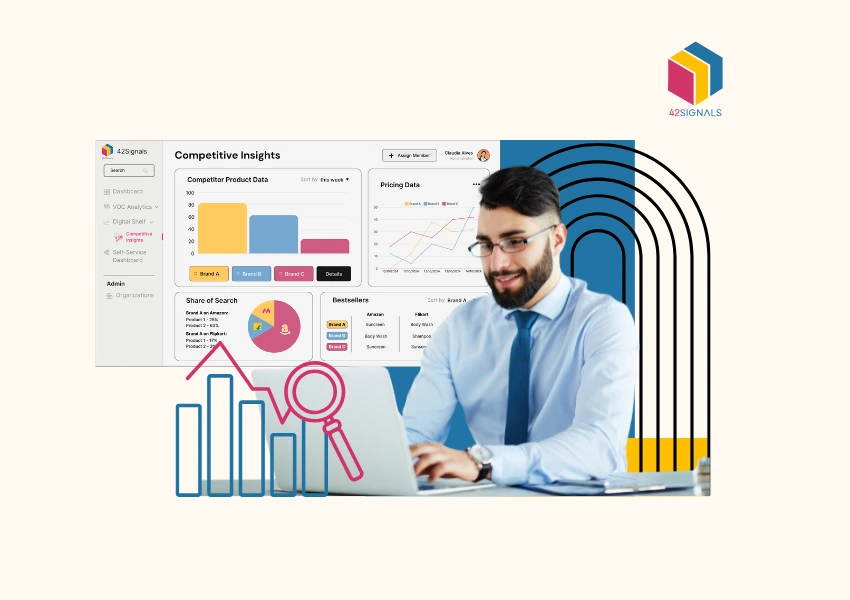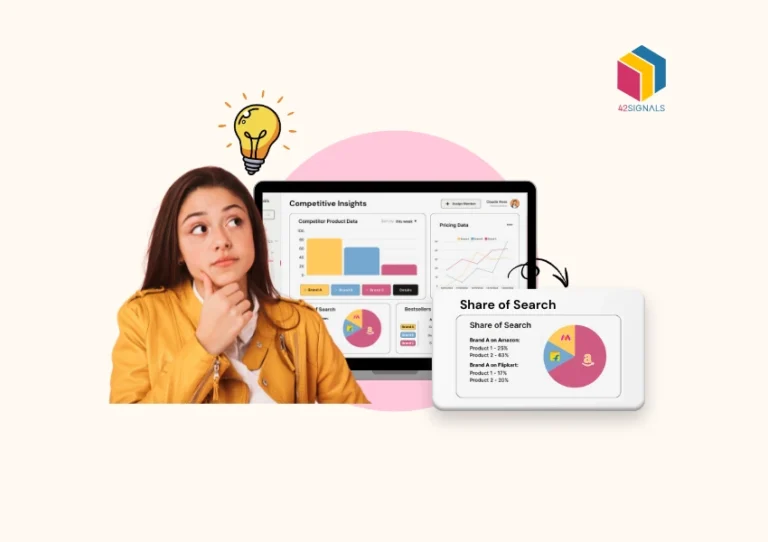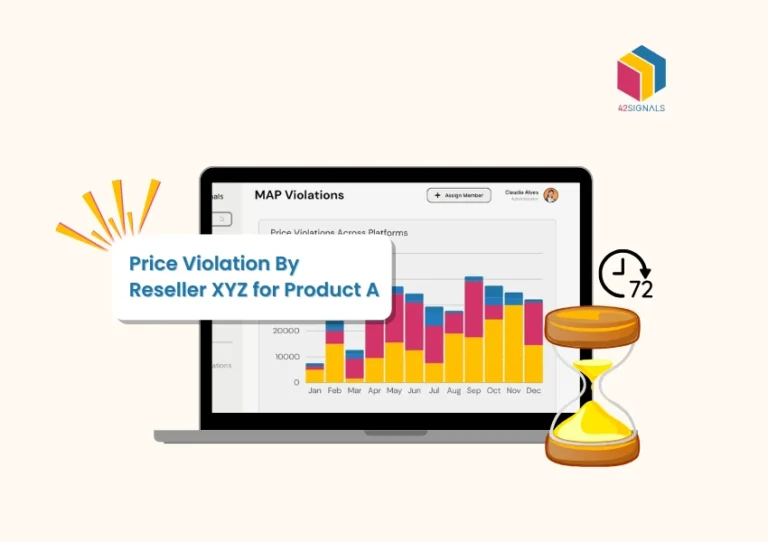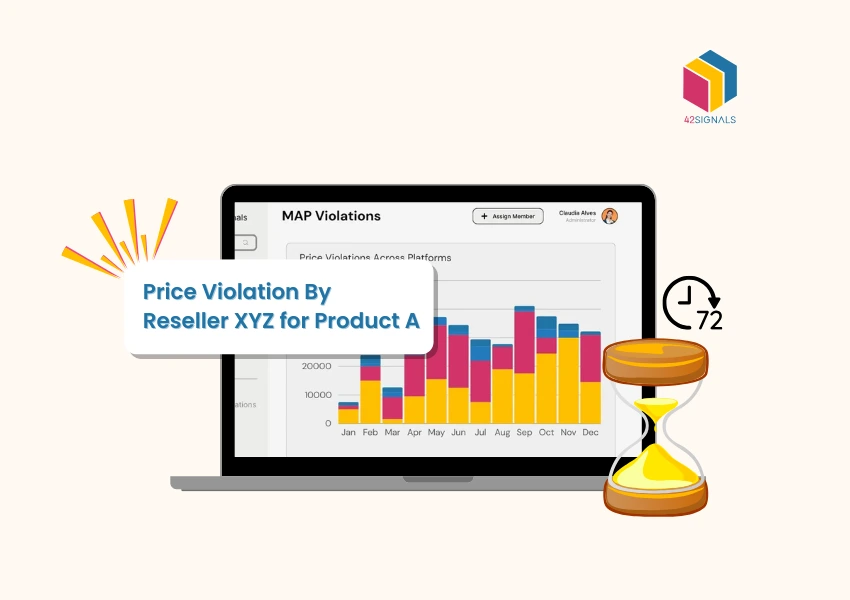Understanding why some of your competitors are outperforming you can feel like a missing puzzle piece. You notice them gaining more sales, interacting with customers more, and their brand loyalty becoming better; however, you are still puzzled by how. The answer can be found through competitor insight, which looks deep into the competitor’s strategic pricing, marketing, and customer relations. This is the guide that will take you through the steps of reverse engineering your competitor’s success through data-driven approaches. We will explain how to extract value from their competitor analysis dashboard and apply digital shelf analytics to help you gain competitor insights that can benefit your business.
Why Competitor Insight is Crucial for Ecommerce Growth

For an entrepreneur looking to break into the ecommerce space, it is vital to understand that competition is fiercer than in most industries. The online marketplace is saturated with new entrants that emerge by the second and have the ability to change pricing and market trends at will.
Almost 60 percent of consumers tend to switch brands based on the current prices and availability of products, as stated in a McKinsey study. As a business, rest assured that the strategies employed by your competitors will directly influence yours.
By gathering competitor insight, you can:
- Pinpoint issues or gaps within your advertising, marketing, and even pricing strategies.
- Seize the opportunity to track ever-evolving trends and changes among consumers.
- Streamline your competitor tracking in order to remain at par with rivals’ market moves.
- Enhance customer services that are based on your competitors’ weaknesses and strengths.
With the right method, you can convert competitor data analysis into a strategic growth plan that outpaces the competition.
Competitor Insights: Find Out Who the Competition Is
Before you start analyzing strategies, you need to define who you’re actually competing with. Many businesses make the mistake of tracking only the biggest names in their industry. The reality? Your biggest competition might be a rising brand you haven’t even noticed yet.
There are different types of competitors:
- Direct competitors sell the same product to the same audience. They’re your closest threats.
- Indirect competitors offer alternative solutions that solve the same problem. They might not seem like a direct threat, but they still take potential customers away.
- Niche competitors target smaller, specialized segments. These are often startups or challenger brands shaking things up.
Mapping out these competitors is crucial. Once you know who to track, you can start breaking down their strategies.
Deconstructing Pricing Strategies with Competitor Insights: More Than Just the Lowest Price
Price wars can kill profitability. But that doesn’t mean you should ignore pricing strategies. The goal is to understand how competitors price their products and what pricing tactics they use to influence customer perception.
Start with these questions:
- Do they use dynamic pricing that adjusts based on demand?
- Are they bundling products to make individual items seem cheaper?
- How often do they run flash sales or discounts?
- Is their pricing positioning them as premium, budget-friendly, or mid-range?
One surprising insight? Some brands intentionally keep prices high to create an image of exclusivity. Others keep prices low but upsell through premium add-ons. Understanding this helps you price more strategically instead of blindly lowering costs.
Marketing Playbook: Reverse Engineering Their Growth Tactics
If a competitor is growing faster than you, they’re doing something right in marketing. The trick is figuring out what’s actually driving their success.
Instead of just glancing at their ads or social media, take a structured approach:
- SEO & Content: Which keywords do they rank for? Are they dominating search traffic through blogs or guides?
- Ad Strategy: Where do they spend the most—Google, Facebook, TikTok? A tool like SEMrush can reveal their ad spending patterns.
- Social Media Trends: What type of content gets them the most engagement? Are they focusing on short-form videos, influencer marketing, or user-generated content?
- Email & Retargeting: How do they nurture leads? Sign up for their emails, abandon a cart, and see how they bring customers back.
One overlooked area? Customer sentiment analysis. Competitor insights aren’t just about their actions—they’re about customer reactions. Check review sites and Reddit threads to see what buyers actually say about their marketing and branding.
Positioning & Messaging: The Art of Perception
You can have the best product in the market, but if you position it the wrong way, customers will overlook it. The most successful competitors craft a brand story that makes their products feel essential.
Break down how they do it:
- What words and phrases do they use to describe their products? Luxury brands use terms like “artisanal” and “exclusive,” while budget brands emphasize “best value” and “affordable.”
- How do they structure product descriptions? Some brands lean on storytelling, while others focus on features and benefits.
- Are they tapping into emotions? Look at their ads—are they selling convenience, aspiration, nostalgia, or urgency?
If a competitor consistently dominates in customer trust and loyalty, their messaging is a big part of the equation. Refining how you present your brand can make a massive impact.
Customer Engagement: Learning from Their Strengths (and Weaknesses)
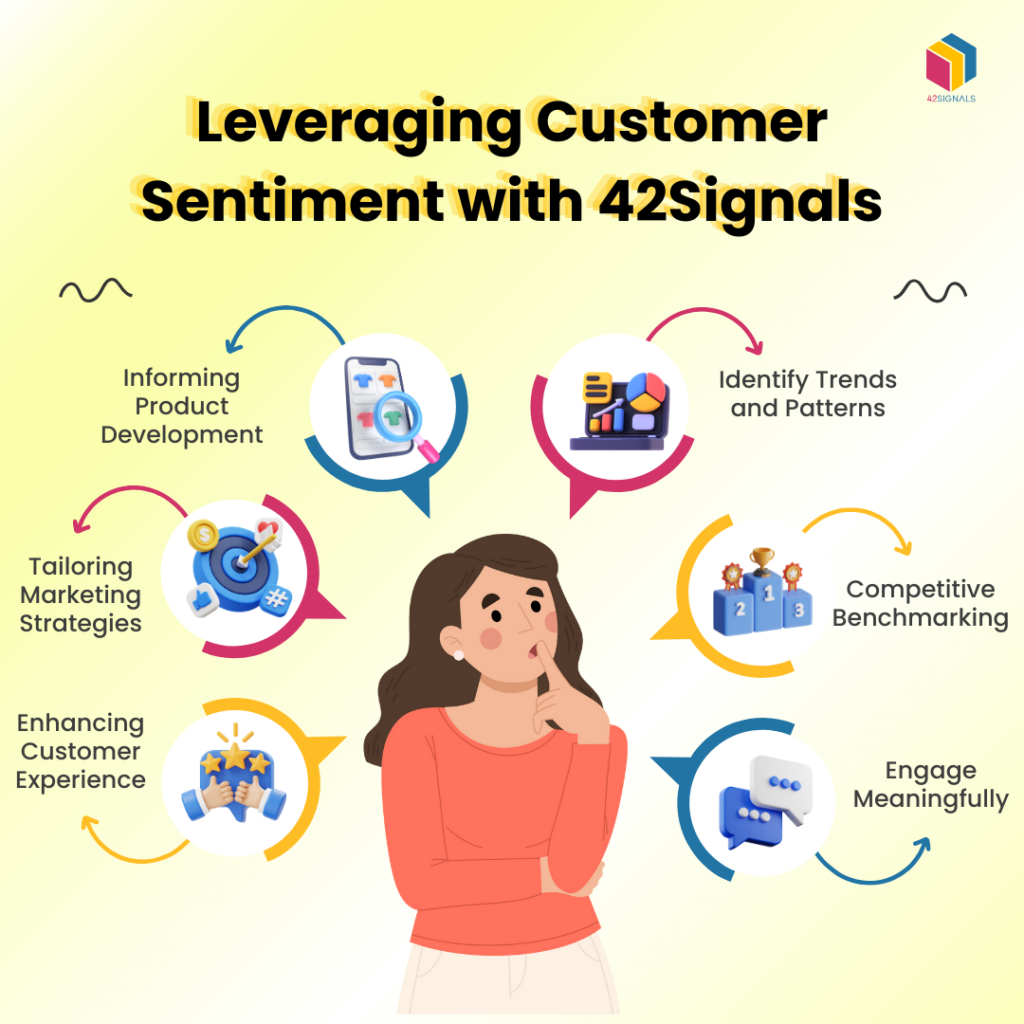
Your competitors’ customers are your potential customers. Studying how they interact with their audience gives you insights into what works—and what doesn’t.
Here’s how you can uncover engagement patterns with competitor insights:
- Reviews & Ratings: What are their biggest strengths? More importantly, what are customers complaining about? A recurring negative theme is a golden opportunity for you.
- Social Media & Forums: Are they responsive? Do they create conversations or just push promotions? A brand with high engagement is likely doing something beyond just posting content.
- Customer Service: Test their response time. Do they offer live chat, email, or phone support? How do they handle complaints? A competitor with slow support gives you an advantage if you can outdo them.
Customer engagement isn’t just about interactions—it’s a signal of brand trust. If you can build stronger engagement, you’ll win customers over in the long run.
Using Competitive Intelligence Tools to Stay Ahead
Manually tracking competitors is impossible at scale. That’s where competitor monitoring tools make the difference. Instead of checking competitor websites daily, you can automate data collection and get real-time updates.
Some of the best tools for this include:
- 42Signals – Helps track pricing, digital shelf presence, and product performance across ecommerce platforms.
- Dynamic Pricing Monitoring: Tracks competitor pricing changes across marketplaces (Amazon, Walmart, Target.com, etc.) and retailers globally. Identifies MAP (Minimum Advertised Price) violations, promotional strategies, and price positioning shifts to protect margins and inform pricing decisions.
- Digital Shelf Analytics: Monitors product visibility, availability, and content accuracy (images, titles, descriptions, key attributes) across hundreds of online retailers. Alerts for critical issues like “out-of-stock,” suppressed listings, or incorrect content impacting discoverability and conversion.
- Product Performance Intelligence: Measures market share, sales rank trends, share of search, and review velocity/ratings. Provides insights into how products perform against competitors within specific categories and retailers.
- Promotions & Assortment Tracking: Identifies competitor promotions (BOGO, discounts, coupons) and tracks assortment changes (new launches, variations, discontinuations) to understand competitive tactics and gaps.
- Share of Voice & Search Visibility: Analyzes keyword rankings and share of search for crucial product terms across platforms, revealing how easily target customers can find your products versus competitors.
- Unified Dashboard & Alerts: Consolidates data from fragmented sources into actionable dashboards and provides real-time customizable alerts for critical events (e.g., price drops, stockouts, new reviews, content changes).
- Key Benefits for Brands:
- Protect Brand Integrity & Margins: Enforce MAP policies and identify unauthorized sellers.
- Maximize Sales & Availability: Prevent lost sales due to stockouts and ensure listings are live and accurate.
- Optimize Content & Discoverability: Improve product content and SEO based on competitor insights and performance data.
- Informed Strategic Decisions: Make data-driven choices on pricing, promotions, assortment, and channel strategy.
- Save Time & Resources: Automate manual monitoring tasks across hundreds of retailers and competitors.

- SEMrush & Ahrefs – Analyze SEO and paid ad strategies to see where competitors are investing.
The right tool depends on what competitor insights matter most to you. For ecommerce brands, digital shelf analytics is one of the most valuable investments, as it lets you track pricing, stock availability, and product visibility in real time.
Turning Competitor Insights into Action
Data is useless unless you act on it. The last step is using competitor insights to improve your own strategy.
That could mean:
- Revisit your pricing model if competitors are leveraging discounts and bundles more effectively.
- Optimizing your ad spend based on what’s working in their campaigns.
- Refine your messaging to better connect with your audience.
- Fixing weaknesses competitors haven’t addressed—If they have bad customer service, outperform them there.
The brands that win aren’t necessarily the ones with the best products. They’re the ones who understand the competitive landscape better than anyone else.
Outsmart The Competition, Don’t Outspend!
Competitive intelligence isn’t about copying—it focuses on analyzing an industry and understanding best practices for a business’s improvement. You can outsmart your competitors through advanced competition by geofencing their success and analyzing pricing, marketing strategies, customer relations, and product offerings.
With the right competitor insight strategy, you don’t have to play catch-up. You can take control of your market position and build a brand that wins—not by following trends but by setting them.
Want to see how real-time competitor insights can give you an edge? Schedule a free demo with 42Signals today and discover how data-driven
